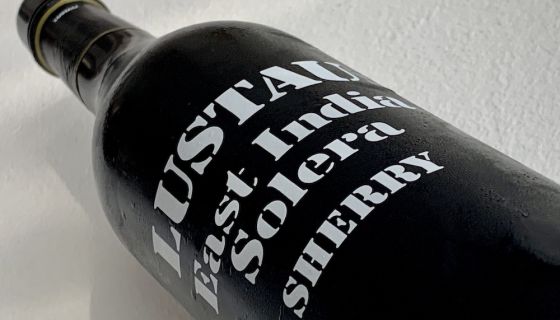From 4,590 Hungarian forint, €14.19, AU$25, 2,090 Japanese yen, £14, $19.99, 129 Danish kroner, 79 Polish zloty, 1,850 roubles, 10,820 Kazakhstani tenge, HK$235, 36,000 South Korean won, 34.40 Swiss francs, SG$54
'Transcendental tasting' is the secret pinnacle of wine appreciation. At this level, bordeaux and burgundy are mere foothills compared with the rarefied obscurities of vin jaune or Carcavelos or marsala. Appreciating these treasures is the mark of the truest, most committed, highest-altitude wine lover.
Few drinkers will ever reach the penultimate stage of transcendental tasting: the sweet style of sherry known as Cream. (The mystical final stage is super-premium blush Zinfandel, the rarest, and very possibly apocryphal, wine of them all.) But those who are ready can prepare themselves for the rapture that is Lustau East India Solera.
Thankfully, such magical elixir is neither expensive nor hard to come by – although the least affordable location appears to my adopted home of Singapore, typically.
Even so, it is worth every cent, and there is definitely something transcendent about it; something in the make-up of its flavours that goes beyond the everyday boundaries of wine.
Firstly, it delivers the accumulated maturity of solera ageing, transmitting the musty, decaying aura of the Jerez 'cathedrals' (Lustau's is pictured above) in liquid form. Such flavour might be almost putrescent in isolation, but in combination with the torrefied sweetness and figgy fruit supplied by the grapes, the holiest of harmonies is achieved.
East India Solera is the most slow-cooked of sherry blends, originally inspired by barrels that undertook ocean voyages underneath hot skies, much like madeira. Today, the barrels are aged in the warmest part of the Lustau cellar, giving an eccentric rancio undertone that adds to the complexity, offset by an uncannily vigorous tanginess to refresh the finish.
More prosaically, the wine is a blend of 80% Oloroso (dry) and 20% Pedro Ximénez (super-sweet) sherries, each of which is aged in a solera for 12 years before being blended and aged for a further three years before bottling. The final sugar level is around 130 g/l, which is in the same bracket as sauternes and port. If there were any justice, it would be served as often as those two – although admittedly that, sadly, isn't saying much.
In fact, I would serve it as a standalone after-dinner drink, since the vortex of flavours on offer really requires no accompaniment. That way, it will get the full attention it deserves: as an outstanding example of the quality, peculiarity and value to be found in the outer reaches of the vinosphere, where only the most adventurous and devout drinkers will travel.
Rich are their rewards!
Learn more about the wonders of sherry by reading this Oxford Companion to Wine entry.














